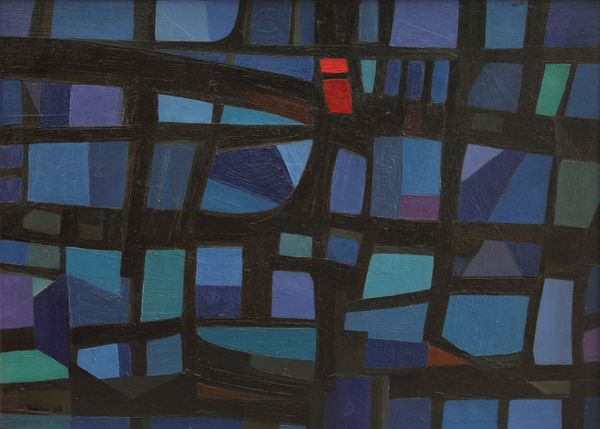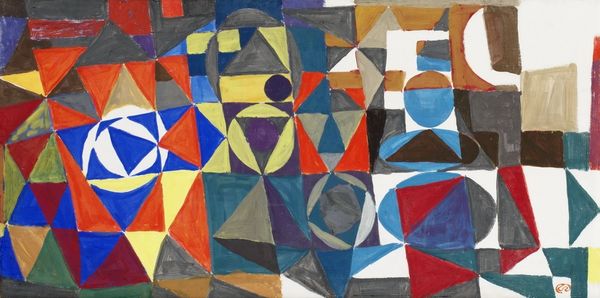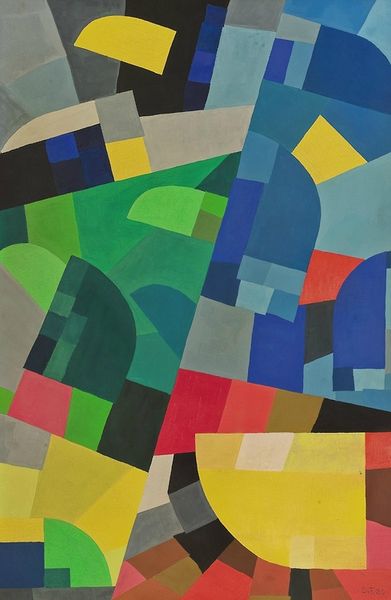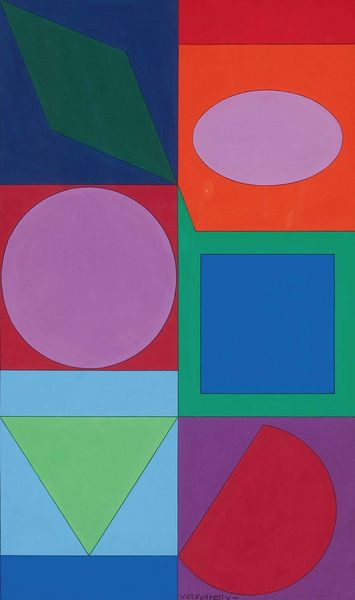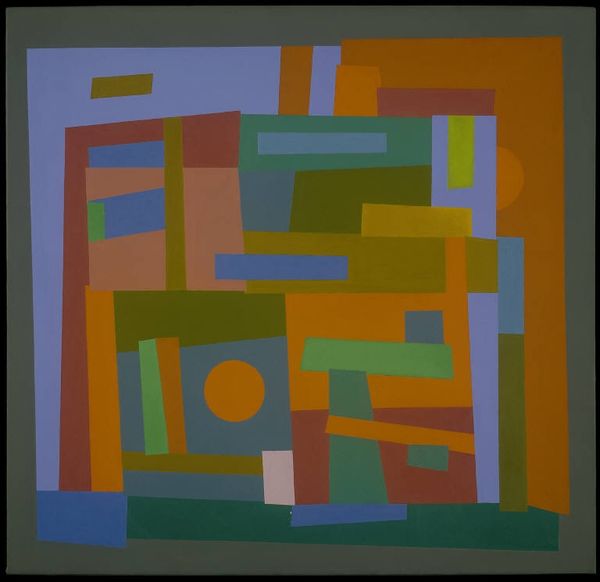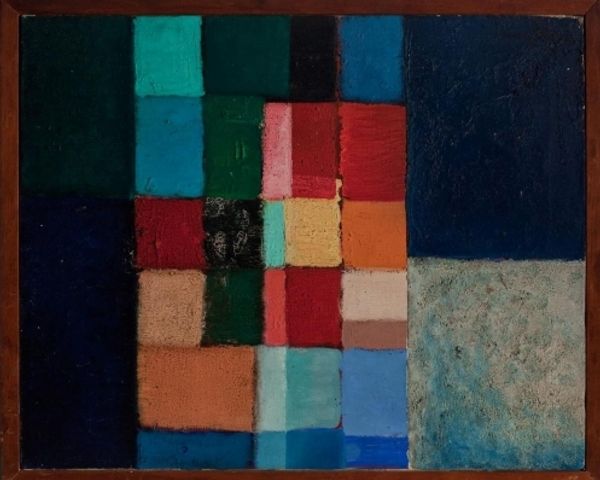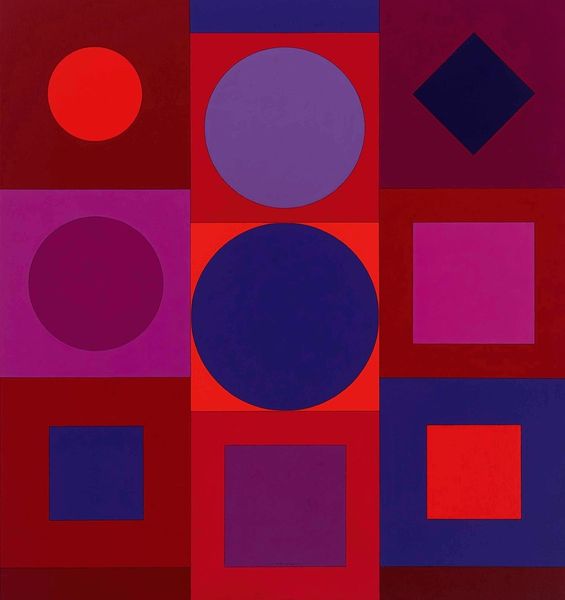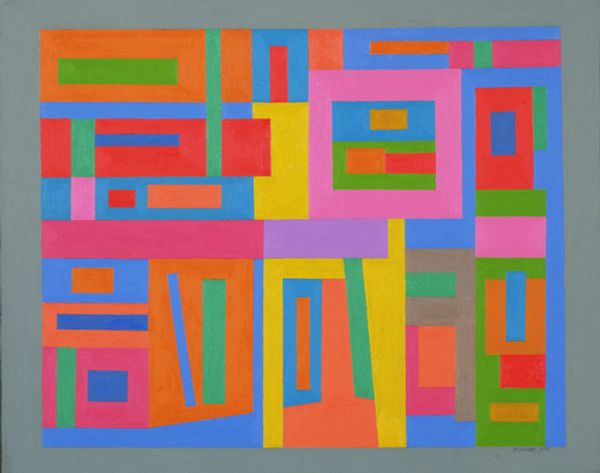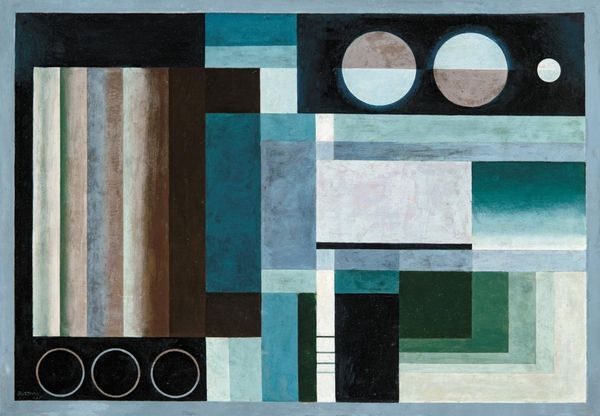
painting
#
cubism
#
abstract painting
#
painting
#
circle
#
pattern
#
geometric pattern
#
tile art
#
abstract pattern
#
minimal pattern
#
geometric
#
geometric-abstraction
#
square
#
abstraction
#
line
Dimensions: 92.5 x 73.5 cm
Copyright: Manuel Cargaleiro,Fair Use
Curator: Oh, this piece by Manuel Cargaleiro from 1969, aptly named "FAG – 16 69", well it just sings to me. Doesn’t it look like the artist unlocked some secret, joyful code? Editor: My first impression is how its geometric abstraction reads like a visual manifesto of its time, a period brimming with counterculture movements. It's playful, yes, but I can’t help but consider it as a product of the late 60s questioning of structure and order. Curator: Exactly! There's such deliberate freedom. I imagine Cargaleiro just dancing with the paint. You see the echoes of the traditional Portuguese tilework, the azulejos, that became his signature? It's like he plucked them from a sun-drenched Lisbon wall and rearranged them in a dream. Editor: And that tension between tradition and modernity speaks volumes. It raises questions of cultural identity, displacement, and continuity. Notice the color palette; it's almost muted, clashing a bit with the bold, flat planes of color he utilizes to build the composition. How do these juxtapositions reflect a changing society, negotiating tradition and new perspectives? Curator: Ah, but the clashes are what give it its zing! They jolt you awake. To me it's about simple beauty, about celebrating form and colour for their own sake, perhaps finding solace in basic geometry amidst chaos, don’t you think? A visual meditation? Editor: It certainly invites meditation. Yet I also read this as a structured deconstruction, mirroring perhaps, contemporary socio-political theories that questioned power and privilege through fragmentation. Does the very act of abstraction here function as an attempt to liberate form from conventional meaning? Curator: (Laughing) Well, you can read all that into it if you want, my friend! Me, I think it’s just nice to look at! It stirs up this delightful little hum of contentment within. Though now that you mention the fragmentation, the shapes DO appear like pieces wanting to break free from their grid, don’t they? Editor: Precisely. Which begs us to ask, what freedoms and limitations do these structures, in both art and society, propose? This isn’t just aesthetics. It’s about engaging with cultural and political languages and considering the historical contexts of the artwork. Curator: You've nudged my thinking! From mere playful delight to deconstruction and historical tension. Suddenly, it holds so much more. Editor: That is what makes encounters with art such a dynamic exchange. It reshapes and recalibrates!
Comments
No comments
Be the first to comment and join the conversation on the ultimate creative platform.
